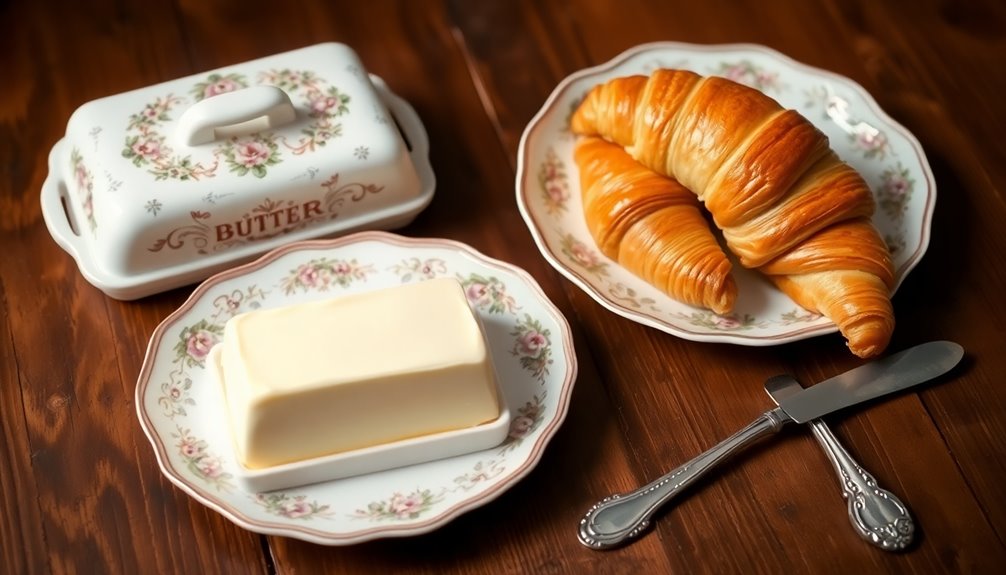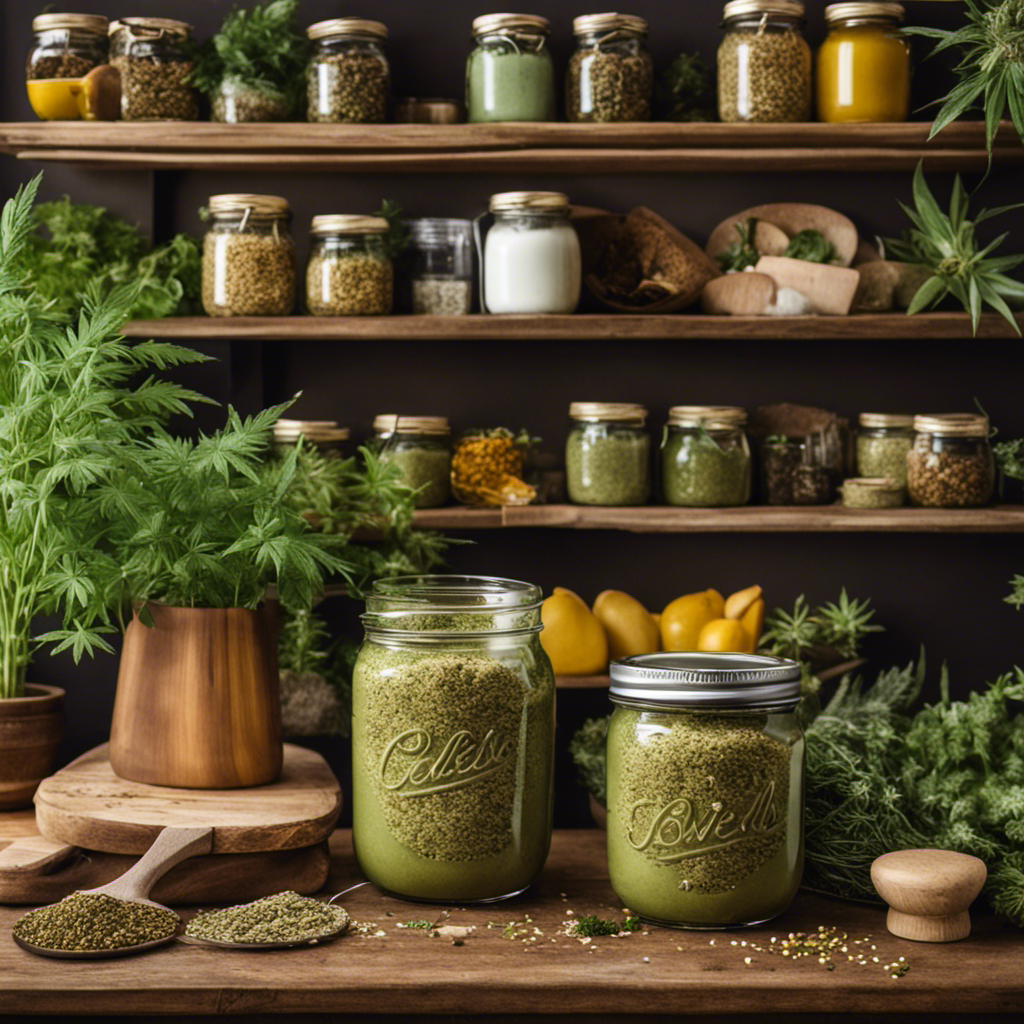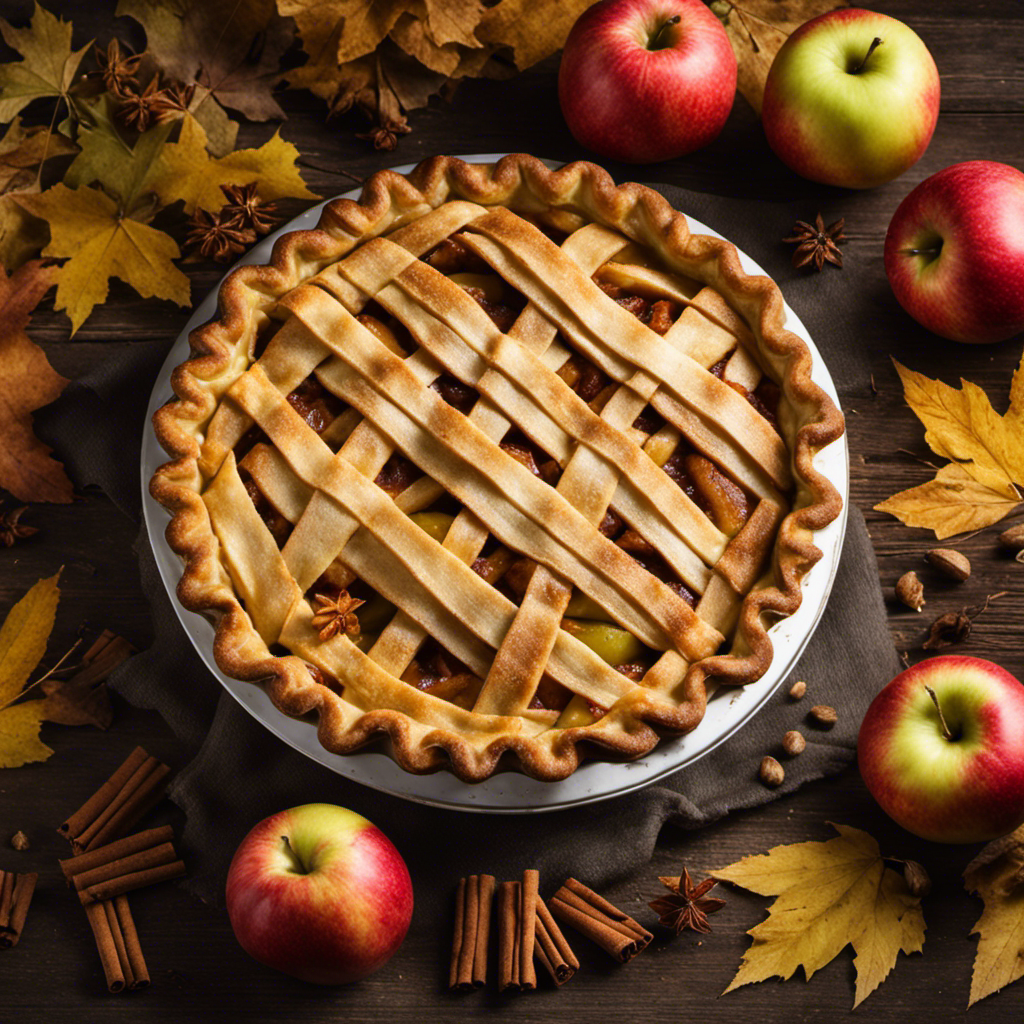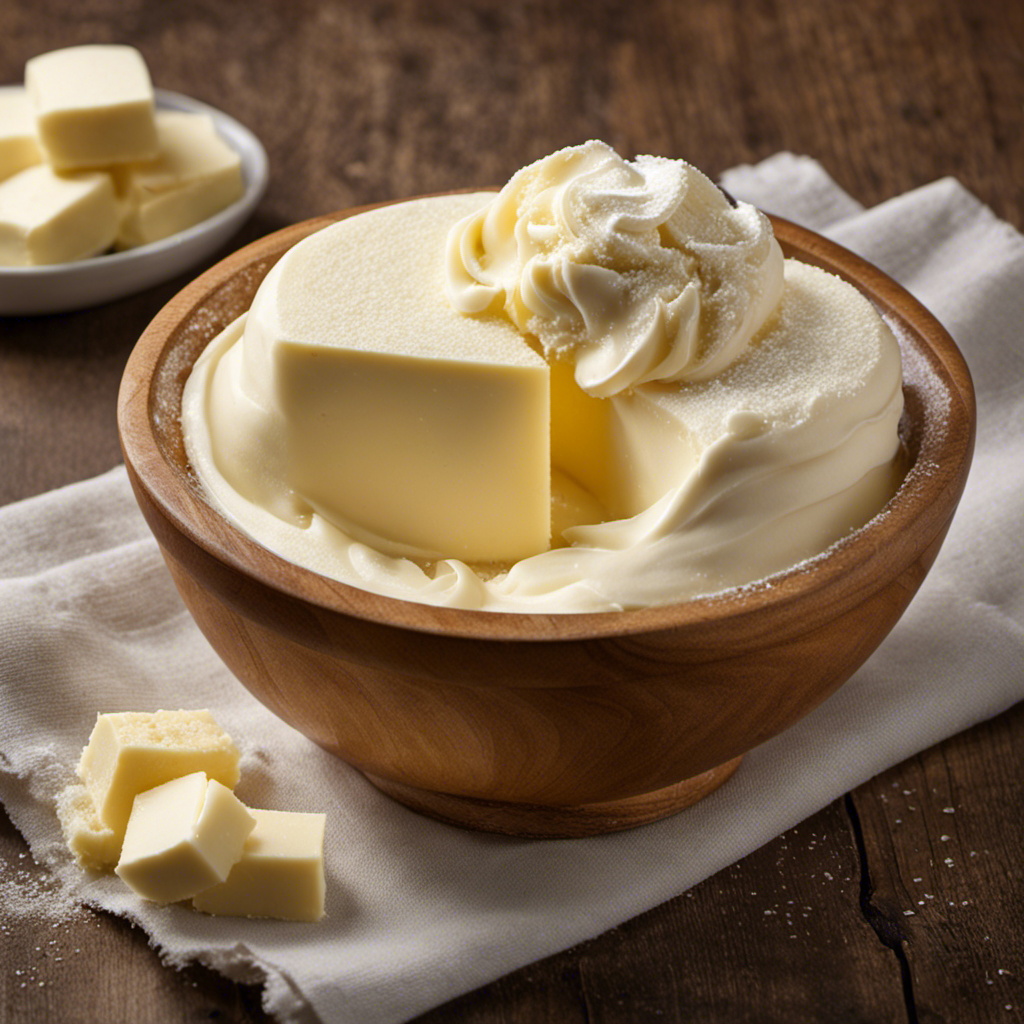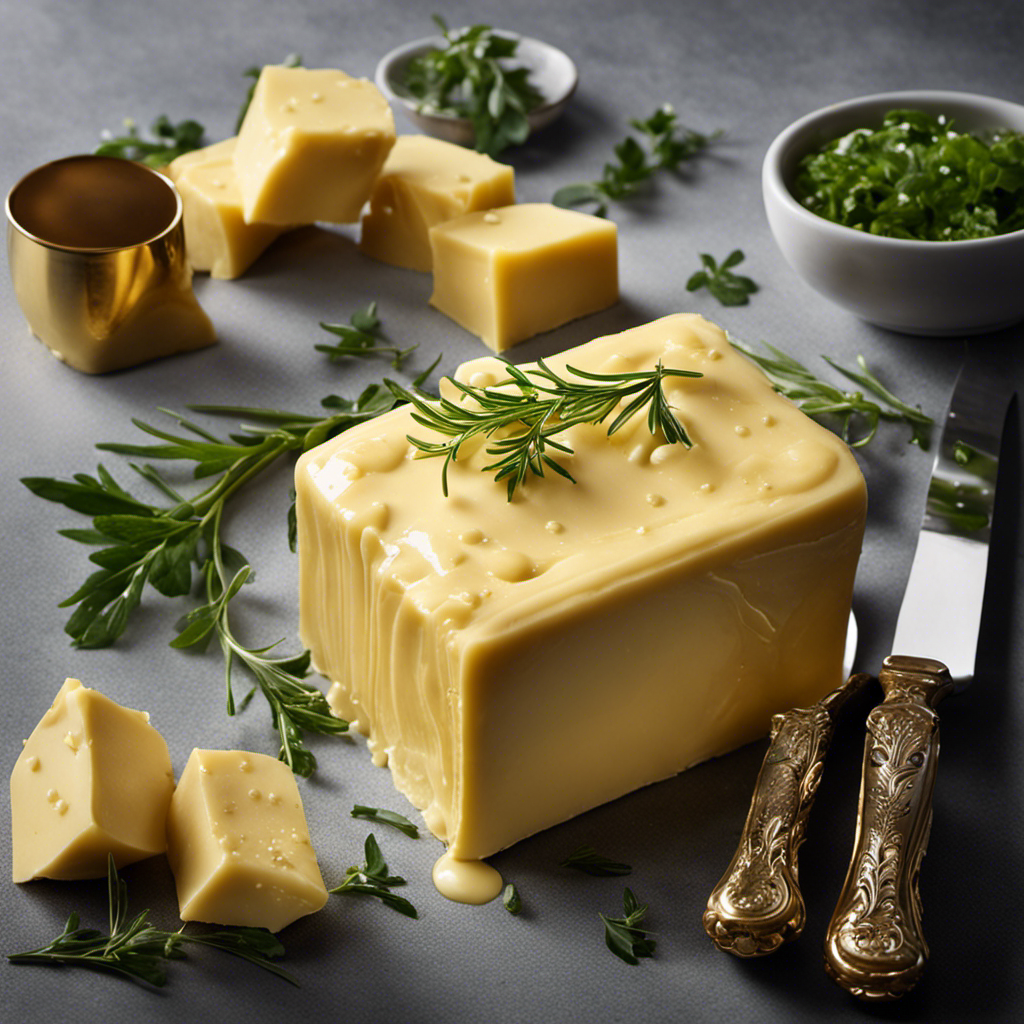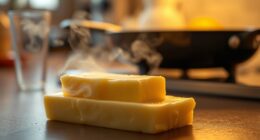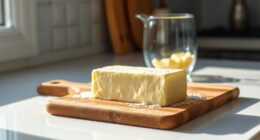When you embrace vintage food, incorporating grass-fed butter is a must. This nutrient-rich fat is packed with vitamins A, D, E, and K, which help support your immune system and enhance nutrient absorption. It's a smart swap for processed oils. You'll enjoy the flavor while keeping your meals satisfying and energy-boosting. Think creamy vegetable omelets or bacon and eggs, all made even better with a buttery touch. By focusing on whole foods and traditional fats, you can feel healthier and more energized. Curious about how to shift smoothly into this lifestyle? There's plenty more to contemplate!
Key Takeaways
- Vintage diets emphasize the consumption of traditional fats like grass-fed butter, which is rich in essential vitamins and healthy fats.
- Grass-fed butter enhances nutrient absorption and provides lasting energy, making it a valuable addition to meals.
- Incorporating butter into your diet can support immune health and overall well-being due to its nutrient density.
- Avoid industrial oils in favor of traditional fats like butter to promote better health and nutrition.
- Using butter in cooking aligns with sustainable eating practices, prioritizing whole, unprocessed foods.
Embracing Whole Foods

Embracing whole foods transforms your diet into a vibrant tapestry of health and nutrition.
You'll want to focus on natural, unprocessed ingredients like eggs, meat, vegetables, and nuts. By prioritizing these foods, you can reduce your intake of grains and processed items that often contain hidden sugars and unhealthy fats. A raw food diet can also improve digestion due to its high fiber content and antioxidants found in many fruits and vegetables. Additionally, incorporating healthy fats like butter can provide essential vitamins and support overall health. Investing in Montessori toys can also encourage children to develop healthy eating habits through play and exploration.
Opt for snacks such as cheese, avocados, and nuts to fuel your body and satisfy cravings. It's essential to limit refined carbohydrates like bread and pasta, which can spike your blood sugar.
Instead, choose healthy fats from sources like olive oil and coconut oil. This shift not only nourishes you but also enhances your overall well-being, making you feel energized and vibrant throughout the day. Incorporating nutrient-dense seeds like chia can further boost your intake of fiber and essential minerals.
The Benefits of Butter
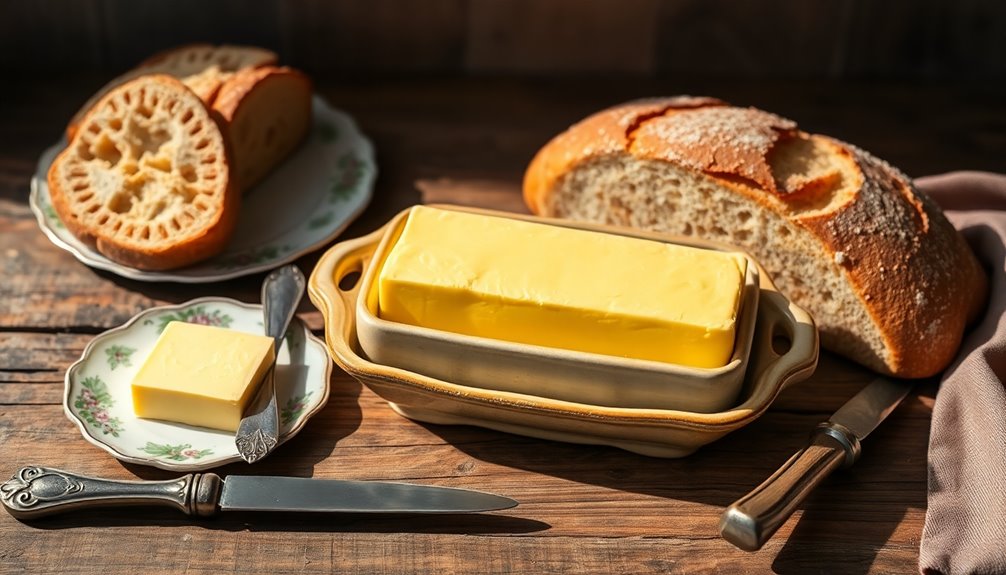
Butter, a symbol of wholesome indulgence, offers numerous health benefits that can enhance your diet.
It's packed with essential vitamins like A, D, E, and K, which support overall health and boost your immune system. You'll also love that butter contains healthy fats, which can improve your nutrient absorption and provide lasting energy. Additionally, butter can serve as a versatile cooking ingredient that elevates a wide range of dishes and flavors, making it a staple in many kitchens around the world. Herbal infused butter can also be created to maximize the health benefits of the herbs used. Butter's creamy texture, resulting from its fat structure, makes it an ideal ingredient for both cooking and baking.
Using butter in your meals can elevate flavor while keeping you satiated, helping you avoid unnecessary snacking. Plus, if you choose grass-fed butter, you'll gain extra omega-3 fatty acids and conjugated linoleic acid (CLA), promoting heart health and fat loss. Additionally, incorporating infused butter into your recipes can enhance flavor and provide health benefits from various herbs.
Incorporating butter into your diet can transform your cooking and bring you closer to a vintage, nutrient-rich eating style that's both delicious and beneficial. This traditional dairy product also plays a role in global cuisine, allowing you to explore diverse culinary traditions while enjoying its richness.
Healthy Fats to Include
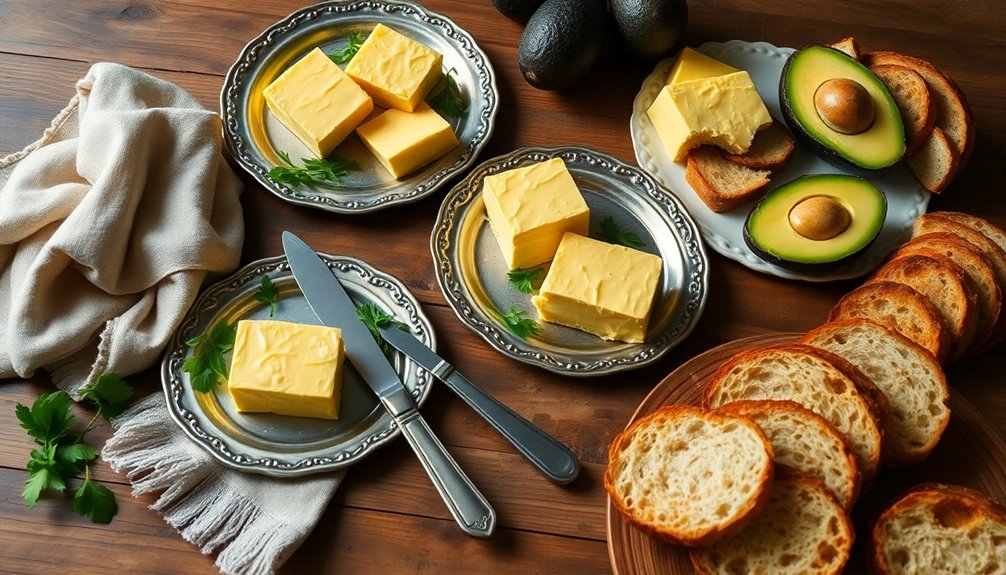
When considering healthy fats to include in your diet, think about the positive impact they can have on your overall health.
Embrace traditional fats like grass-fed butter, olive oil, and coconut oil. These fats not only enhance flavor but also provide essential nutrients, such as vitamins A, D, E, and K found in clarified butter. Incorporating herbal remedies can further promote overall health and vitality. Incorporate full-fat dairy, if it suits you, and consider using dark chocolate (70% cacao) as a satisfying treat. Additionally, incorporating nutrient-rich honey like Manuka honey can provide health benefits such as antibacterial properties and immune support. Including healthy fats can also support retirement planning by contributing to overall well-being and potentially lowering healthcare costs in later years. Moreover, including cacao's health benefits in your diet can enhance mood and provide antioxidants. Avoid industrial oils such as corn and canola, which undergo chemical processing and offer little nutritional benefit. Instead, snack on nuts, cheese, and avocados for a nutrient boost.
Breakfast Reimagined

Redefining breakfast can significantly enhance your daily nutrition and energy levels. Instead of reaching for sugary cereals or toast, consider a meal rich in protein and healthy fats. Think bacon and eggs fried in butter or a creamy omelet packed with vegetables. These choices not only keep you satisfied longer but also stabilize your blood sugar. Incorporating options like coconut oil can further enhance the flavor and nutrient profile of your breakfast. Additionally, opting for ingredients like hydrating foods can support overall skin health, complementing your nutritional goals. If you're not hungry, it's okay to skip breakfast altogether; listen to your body. You can also experiment with high-fat options like bulletproof coffee or full-fat yogurt. Coffee's health benefits include enhanced cognitive function and improved mood, making it a great addition to your morning routine. Ditch the low-fat, processed alternatives that do more harm than good. Butter's composition includes essential fats that contribute to a balanced diet, promoting overall health and wellness. Regular consumption of glycolic acid products can also improve skin texture and radiance, further supporting your overall health goals.
Sustainable Eating Practices
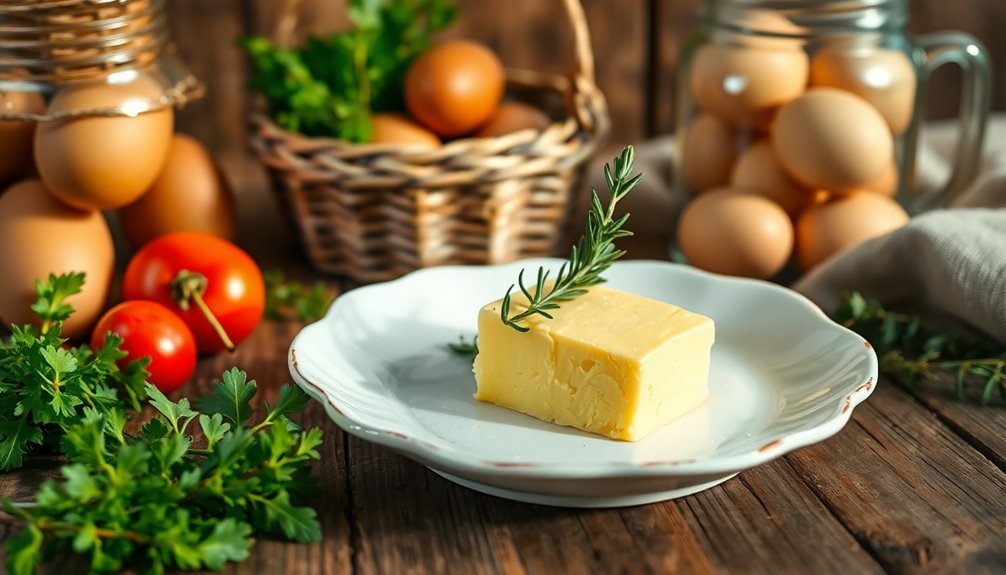
Mindful eating practices not only enhance your health but also foster a sustainable food system. By prioritizing real foods like grass-fed meats, pastured dairy, and seasonal produce, you support local farmers and reduce your carbon footprint. Incorporating essential oils into your cooking can also elevate flavors while providing health benefits. Additionally, including chia seeds in your meals can contribute to digestive health and overall well-being.
When you choose wild-caught fish and organic options for the "dirty dozen," you minimize pesticide exposure and promote ethical farming. Focus on whole foods over processed ones, as they typically have a lower environmental impact. Being aware of food origins helps you make healthier choices. Attend farmers' markets for fresher, seasonal produce, and if your budget's tight, prioritize quality meats and dairy over organic labels. Additionally, incorporating air purifiers into your home can further enhance your overall well-being by improving indoor air quality.
Transitioning to Vintage Diets
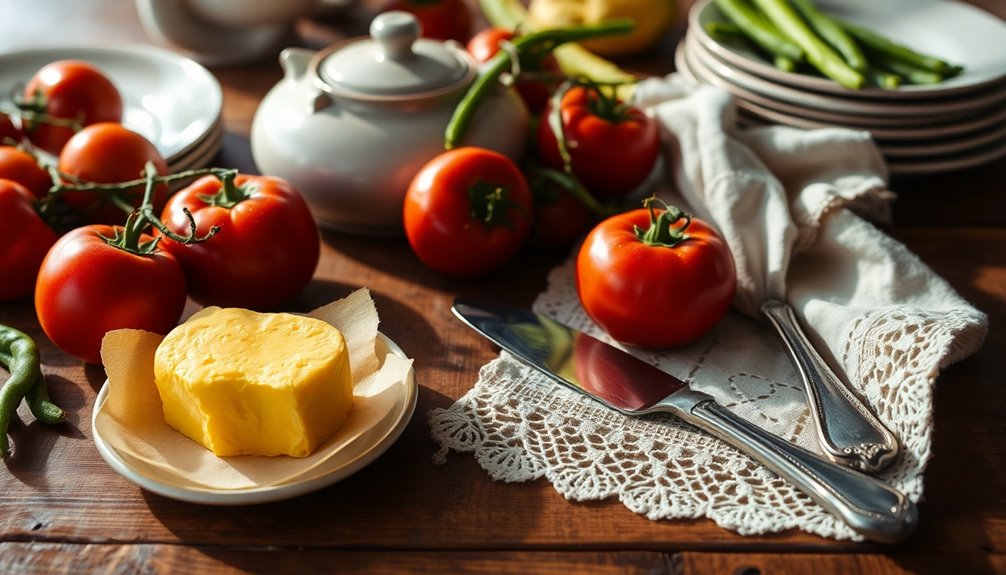
Shifting your eating habits toward a vintage diet can feel intimidating, but it's a rewarding journey that emphasizes whole, natural foods.
Begin by gradually eliminating processed foods and sugary drinks from your diet. You might start with one meal at a time, focusing on incorporating nutrient-dense options like eggs, meats, and vegetables.
Instead of cereal, try a protein-rich breakfast with bacon and eggs cooked in butter. Embrace healthy fats like olive oil and coconut oil while avoiding industrial oils.
Listen to your body; it's okay to skip meals if you're not hungry. As you make these changes, you may experience some side effects, but they'll likely pass as your body adapts to nourishing, vintage-style foods.
Expert Insights and Resources

Several experts offer valuable insights and resources to help you navigate the change to a vintage diet effectively. You can benefit from their guidance as you make this transformation.
Here are some key resources and tips:
- Dr. Andreas Eenfeldt: Focuses on managing side effects and diabetes.
- Dr. Peter Attia: Offers strategies for weight loss and athletic performance.
- David Asprey: Provides starting points for vitamins and supplements.
- Mark Sisson: Discusses easing into primal eating and diabetes management.
- Books and online forums: Explore low-carb and vintage diet communities for support.
Frequently Asked Questions
Can Children Consume Butter Regularly in Their Diets?
Yes, children can consume butter regularly in their diets, as it's a source of healthy fats essential for growth and development.
It's important to choose grass-fed butter for added nutrients. When you incorporate butter in moderation, it can enhance the flavor of meals while providing energy.
Just be certain to balance it with plenty of whole foods like vegetables, fruits, and proteins to guarantee your child gets a well-rounded diet.
What Are the Signs of a Butter Allergy?
Imagine a beautiful painting suddenly marred by a splash of an unexpected color—this is how a butter allergy can disrupt your well-being.
If you notice symptoms like hives, swelling, or stomach cramps after consuming butter, it could be a sign. You might also experience respiratory issues or anaphylaxis in severe cases.
Always listen to your body; if something feels off, consulting a healthcare professional is a smart move. Your health deserves attention!
Is Butter Safe for Those With Lactose Intolerance?
If you have lactose intolerance, you might still enjoy butter. Most butter contains very little lactose, as the churning process removes much of it.
Many people with lactose intolerance tolerate butter without issues. However, if you're unsure, try clarifying butter or ghee, which have even lower lactose levels.
Always listen to your body; if you experience discomfort, consider alternative fats like olive oil or coconut oil for cooking and baking.
How Do I Store Butter for Maximum Freshness?
To store butter for maximum freshness, keep it in the fridge, wrapped tightly in its original packaging or in an airtight container.
If you won't use it soon, consider freezing it; just cut it into portions for easier use later.
Avoid leaving it out at room temperature for extended periods, as this can lead to spoilage.
Check for freshness by smelling it; if it smells off, it's time to toss it.
Can Butter Be Used in Baking Without Affecting Texture?
Think of butter as the artist's brush; it brings life and richness to your baked creations.
Yes, you can absolutely use butter in baking without compromising texture. In fact, its fat content helps create a tender crumb and enhances flavor.
Just remember to use it at the right temperature—softened or melted, depending on the recipe.
Your baked goods will rise to the occasion, embodying the deliciousness that only butter can impart.
Conclusion
As you step into the world of vintage eating, imagine your plate as a vibrant canvas, painted with the rich hues of whole foods and the golden glow of butter. Each bite becomes a celebration of flavor and nourishment, inviting you to savor life's simple pleasures. By embracing this lifestyle, you're not just feeding your body; you're nurturing your soul. So, let the past inspire your present, and watch as your health flourishes like a garden in full bloom.
